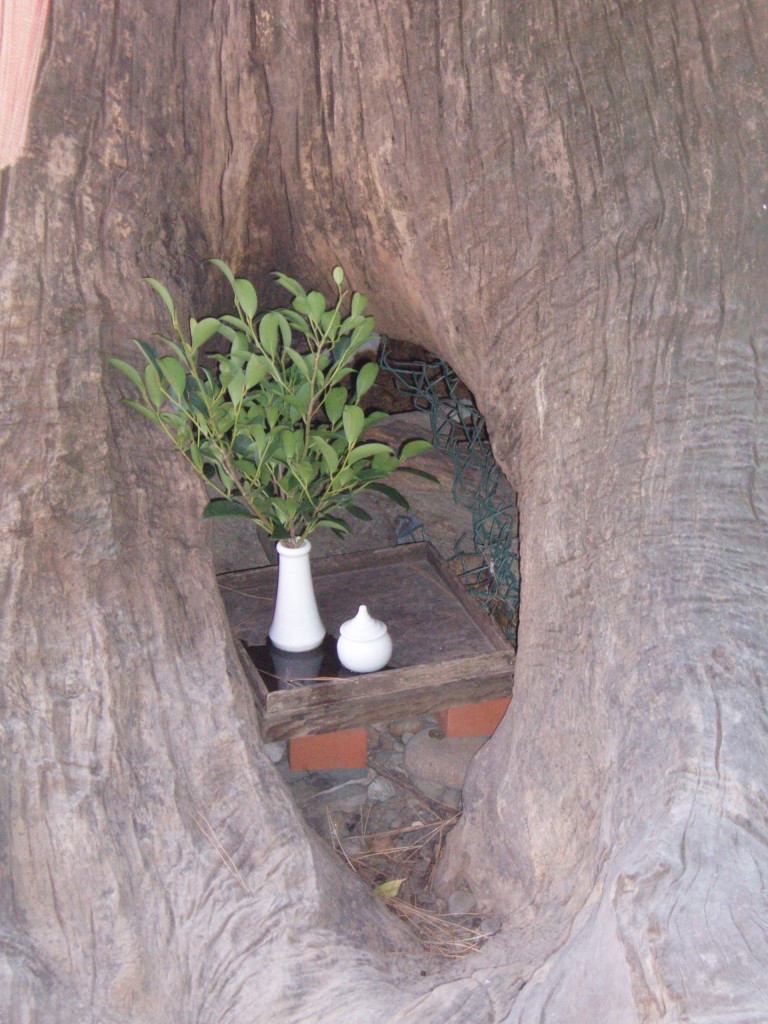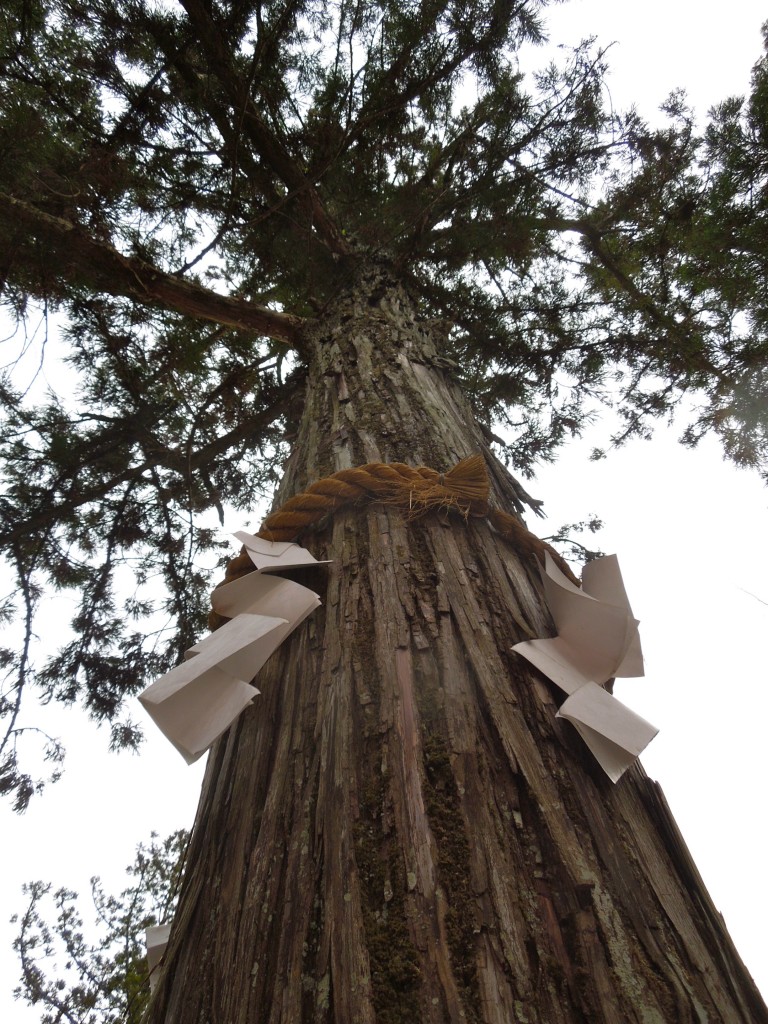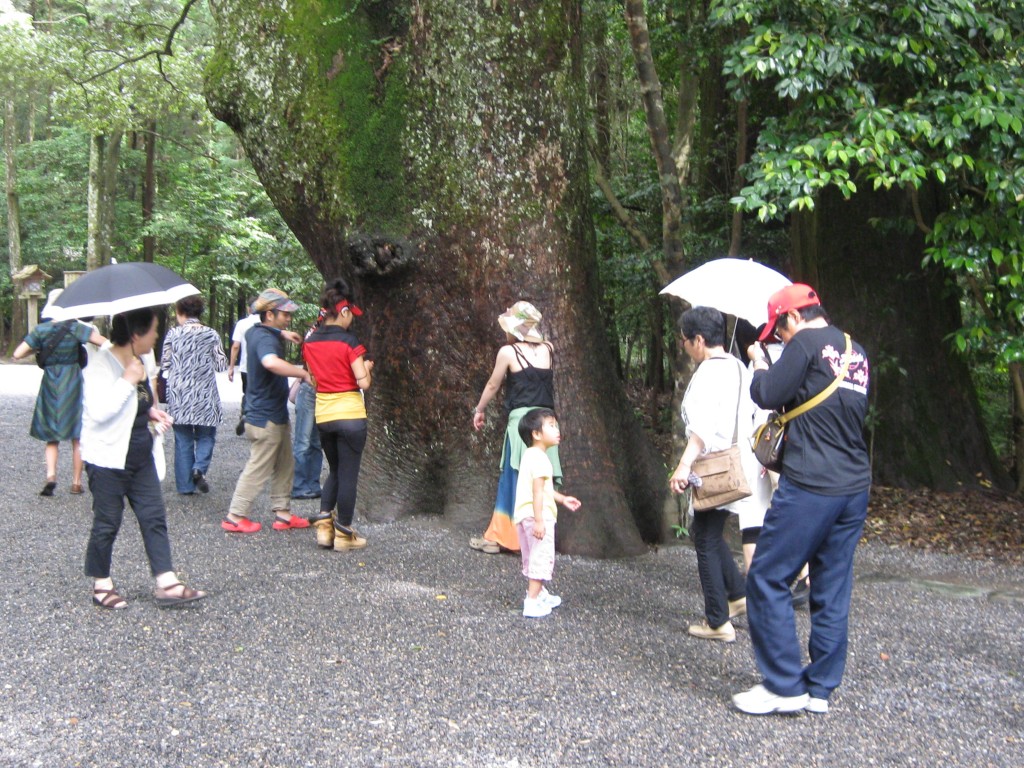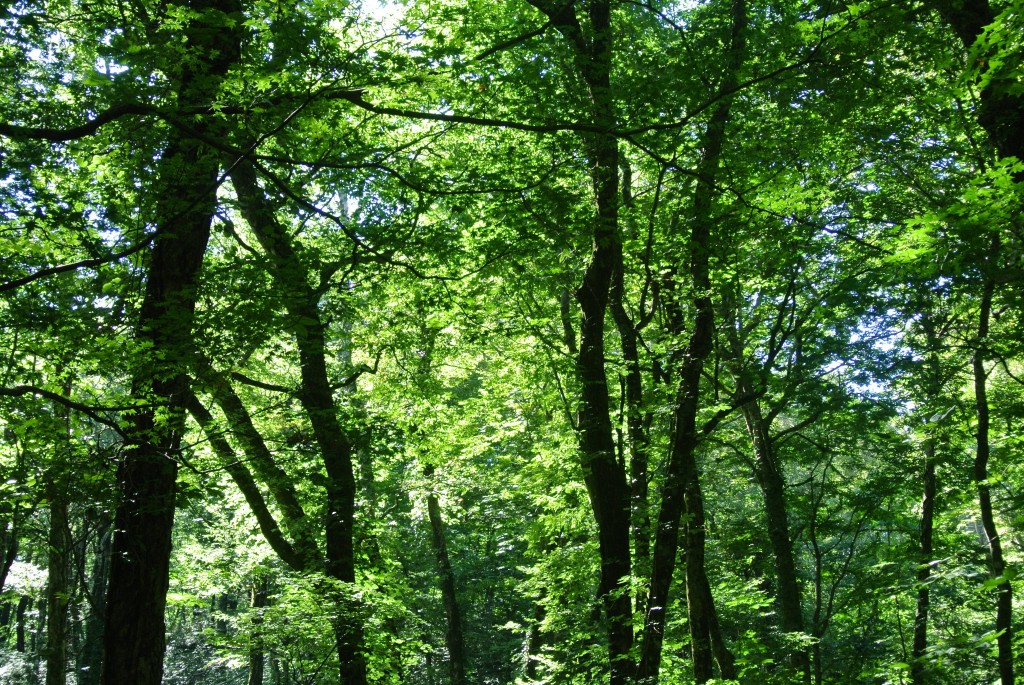Every year the International Shinto Studies Association (Shinto Kokusai Gakkai) runs a competition for the best essay about Shinto. The winners are usually published in a collection, though last year there were no winners. The Essay Competiton flyer for 2014 will be posted shortly on the Association*s homepage.
Green Shinto is delighted to carry one of the winning entries for the 2011 competition, thanks to its author Michael Zdan who has obtained permission from the Association. It concerns a subject dear to the heart of any animist and nature lover. Trees are born out of Mother Earth and reach upwards towards the heavens, making a sacred connection between the Lower and Upper Worlds. They speak to the shamanic roots of Shinto, and they formed mankind’s earliest places of worship. They have much to teach us if we would only listen.
**************************************************************************************
Shrines and their Trees – Pillar at the Heart of the Divine
by Michael Zdan
In this sanctuary,
I perceive the fundamental unity of all religions.
– A. J. Toynbee, on Ise Jingu

Sakaki offering in a tree shrine
From before recorded history until the present day, a relationship has existed between Shinto shrines and trees that is without parallel in terms of a connection between sacred and natural spaces. Besides the emblematic torii that one enters when crossing into the purified grounds of a shrine, the verdant groves, lush foliage and impressive size and shape of strong, old trees make them one of the strongest emblems of Shinto and its shrines.
Perhaps even more so than in the past – when human architecture and cities were less pervasive – the oases of green that shrine grounds continue to protect remind both reverent visitors and casual observers alike of an intangible connection that we as humans have with trees. More than this, a consideration of the connection between shrines and trees offers insight into Shinto thought and worldview that was as profound thousands of years ago as it is today. The study of this relationship however, contributes not only to deeper understanding of Shinto itself, but also its correlation to other ways of thinking and its potential as a positive spiritual, social, and environmental force.
Indeed, it is exceedingly difficult to imagine life without trees. Verdant parks, golf courses, and lake property are coveted by land owners, in no small part due to the abundance of the shade-providing wildlife habitat of which groves and forests are an integral element. In the same instant that a community permits deforestation to develop land into a city suburb, new residents demand and expect shipments of young trees from nurseries to enliven home lots and boulevards. There exists a clear human desire for closeness to the greenery of a tree.
The human connection to trees is more obvious in our use of their products. Even in an age of steel and plastic, our homes, workplaces and most other buildings continue to rely on wood for its ability to be shaped, its strength and structural qualities, as well as its physical beauty. The paper we use in vast quantities allows our personal and business lives to flourish, and books and newspapers remain indispensable for education and the flow of ideas and information.

Sacred trees are like pillars to a different world
Upon first consideration, the modern perception of trees as scenery and resource does not appear compatible with the sort of reverence that ancient peoples might have accorded them. We may worry that our professed appreciation of them appears hypocritical. Yet, the wood of magnificent trees was prized ages ago as material for important shrines or Buddhist statuary. In other cases, the cutting of such trees was absolutely prohibited in Japan, by virtue of the divine character which they expressed.
Some of the most treasured scenic areas of Japan have been noted for their green spaces and trees; the islands of Matsushima, for example. The desire to be close to living spaces has not diminished, and industries such as eco-tourism give people the opportunity to visit breathtaking areas around the world. From these ways of thinking alone, it becomes obvious that human thought concerning trees has not changed substantially throughout the ages. We make use of trees, yet maintain a fondness, and a sometimes unspoken respect for them.
Shinto shrines, places where people feel an especially strong connection to kami, were originally specific, sacred groves of trees, or other inspiring natural areas. Such spaces in particular were deliberately selected, due to a feeling of connection to kami in that particular location. Although the concept of kami may be well understood by Japanese and those with an exposure to Shinto, it is essential to understand the unique connotations of this word in the Shinto context of shrines, trees, and the spiritual world.
One definition of kami includes “any thing or phenomenon that produces the emotions of fear and awe, with no distinction between good and evil.” While such a definition may seem imposing, scholars also note that “in Shinto, there is no separation between the universe and divine creative spirit. The universe is divine creative spirit extending itself as matter and as life.” Like the expansion of the universe and its coalescence into stars, planets and living organisms, it is possible to visualize divine energy being manifest as kami. As the word Shinto itself means “the way of the kami,” it can also be understood as the way of harmoniously following divine creative spirit, the cycles and systems of the natural world.

Touching the trees at Ise is considered good luck
Shinto thought concerning the interrelatedness of the universe and divine spirit as kami is illuminated through the logical connection to nature, including of course, trees. From extremely talented or charismatic individuals, to devastating natural disasters including typhoons and earthquakes, to breathtaking ocean or mountain scenery, Shinto associates that which is awe-inspiring to a common, natural source. “Nature is not a mechanical product of an aloof manufacturing principle… Nature is divine spirit, itself, self-expanding.” In other words, Shinto recognizes the interconnectedness and common origin of all universal phenomena. This is a level of ancient understanding that has not been discarded with time, but has rather been reinforced by continuing scientific discoveries, most famously the dual nature of matter and energy of Einstein’s equation.
Accordingly, a visit to a Shinto shrine is made to renew a sense of connection to kami, and to express gratitude for the life and nourishment one receives from the natural world. As buildings, shrines house goshintai, physical objects in which the presence of kami is localized. Also known as yorishiro, these objects can be man-made, but were originally rocks, trees and sacred groves. Just as we appreciate the beauty of a tree and enjoy spending time in scenic woods, we can imagine the impression that great trees would have made on people long ago, and the sense of divinity those trees would have inspired in them. At Omiwa Jinja, the mountain Miwayama itself serves this purpose, its tree-covered slopes representative of an ancient shrine layout, before the building of separate shinden for the shrine’s goshintai.
While today’s shrines are often comprised of many buildings, their connection to trees is maintained. Significantly, the offering of a branch of sakaki is frequently a part of shrine ritual. Known as tamagushi, the evergreen bough symbolizes both longevity and the energy that connects oneself to kami. This respect for the size, age, and vibrant greenery of great trees was common to ancient thought throughout the world, and people continue to feel a deep, spiritual connection to the impressive sakaki and ginkgo of shrine grounds.

Woods - wholesome, purifying, and life-enhancing. Simply divine.

Leave a Reply